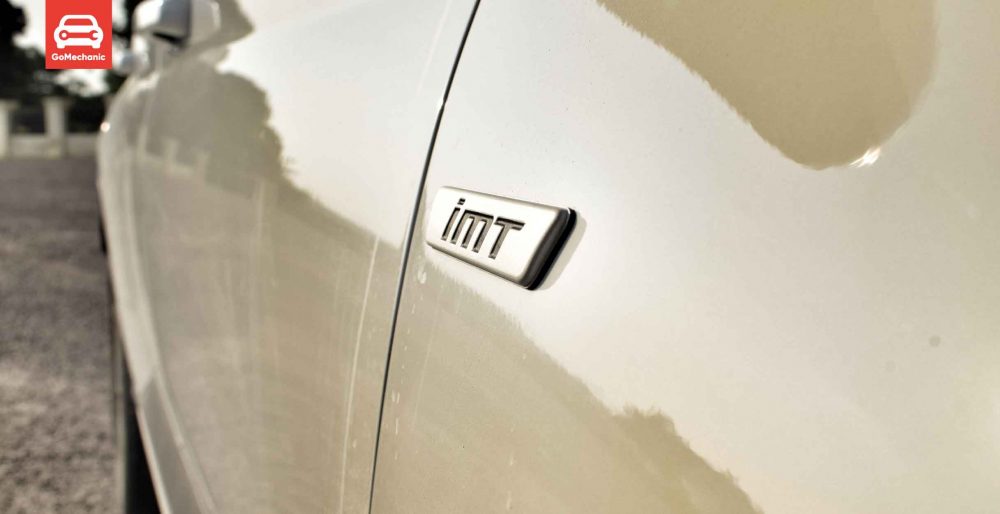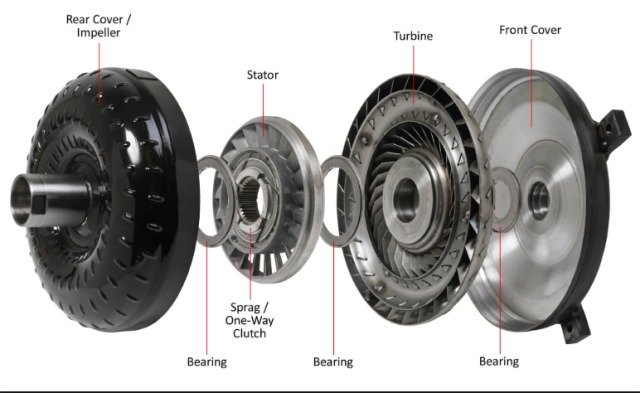As more and more cars are shifting towards being automatic a question arises in the back of our minds. Are these automatic transmissions as efficient as manual? Let’s look at some of the modern automatic transmission and their fuel efficiency.
Similar Read: DCT vs CVT vs AMT | Choose The Best Transmission
As we have already covered the workings and details of automatic transmission multiple times let’s get straight into the fuel efficiency of each transmission.
Continuously Variable Transmission (CVT)

CVTs are really efficient due to their multiple and frankly almost infinite gear ratios. The system ensures that the power supplied is after considering the peak efficiency possible. This is the reason that more and more companies are starting to fit CVTs in their cars that are featured as economic.
Due to its infinite combinations, it can always keep the ratio at the perfect stage. When cruising at nominal speeds the engine revs stay low thus saving fuel and when power is demanded it goes high without a delay, unlike a regular gearbox where there is a need to switch gears. This might save a tiny amount of fuel but in the long terms, the benefits are visible.
With the demand for efficient vehicles rising CVT will only take more share of the automatic transmission market.
Checkout the GoMechanic YouTube Channel and Subscribe for awesome automotive content.
Download The GoMechanic App Now!
Dual Clutch Transmission (DCT)

DCTs are mostly used in high-performance cars due to the speed of gearshift that they offer. As such they are not made with efficiency in mind. They still however are efficient compared to a manual transmission.
As the DCT is almost completely handled by a computer there is no delay in its action. The transmission is always running and there are no breaks in it thus fuel is not wasted to power it again at every gear shift. The gear shifts are also faster than what a human can perform which makes them a little bit efficient as well.
They still, however, lack behind CVT in terms of efficiency but are better compared to manual because of perfect gear shifts and permanently running transmission.
Read More: Types of Automatic Transmission Systems Available In India Explained
Automated Manual Transmission (AMT)

AMTs are not really efficient when it comes to comparing them to other transmissions. They lag behind manual as well. AMTs are made while keeping in mind the ease of driving and keeping it cheap so it can be provided in low-end cars. This makes automatic cars available to everyone.
As AMT is just a new feature on top of an already existing manual transmission it doesn’t get a lot of benefits that DCT and CVT have. On the contrary, the automatic features make it worse in terms of fuel efficiency thus making it the least efficient of DCT AND CVT and even manual transmission.
Intelligent Manual Transmission (iMT)

iMT’s can be called an upgrade over the AMT’s because they actually are. As the driver has the control of the gear shifts, iMT hands them the efficiency. The fewer jerks and no unintended gear shifts due to RPM changes also help in its fuel efficiency
The control of the gear shifting allows the iMT to perform on par with manual transmission on fuel economy. It also has better numbers than what AMT offers thus making AMT the least fuel-efficient of them all.
Torque Converter

The most common form of the automatic transmission, torque converters have been around for a while and have seen some major improvements in regards to fuel efficiency.
They started out with a really bad fuel economy because of slippage and overheating issues. This, however, has changed through the years because of the numbers of updates the system as got such as lockup at high speeds which prevents slippage.
Torque converters currently have almost no visible difference from manual in terms of fuel efficiency. Take the example of Maruti Suzuki S Cross petrol which features both a manual and a torque converter transmission. The manual ARAI economy is 18.55kmpl while torque converter has 18.43kmpl which is almost negligible.
This covers the major Automatic transmission and their efficiency compared to each other and manual transmission.








Suzuki Celerio AGS falls in which category?
Hi Sanjay,
Maruti Suzuki Celerio AGS falls in the AMT or the Automated Manual Transmission category. Suzuki’s in-house developed AMT is known as AGS. Stay pinned!
After reading many many car reviews, the auto model is less economical. Goes opposite to what all the automatic write ups tell you, so where is the automatic going wrong?
I have been involved in measuring efficiencies of different types of transmissions. In general, the peak efficiencies of all (well designed) transmissions are about the same, and are 98% or higher. However, there is a large variation in efficiency at lower input torques. The best efficiency at low torques is in a Dry DCT, followed by a wet DCT, a planetary automatic (with torque converter), and finally, a CVT. I have never measured the efficiency of an AMT, but I would expect that would be similar to a dry DCT. These are efficiencies as measured on a dynamometer. However, once you pair the transmission with an engine, many other things come into play:
– The number of gears in the transmission. Automatics may have 6 to 10 gears. Manuals usually have 5 or 6 gears. CVTs have theoretically an infinite number of gears. The more the number of gears, the more easy it is to run the engine at an efficient operating point, assuming that the gear ratios are designed well.
– Manual transmissions have splash lubrication and do not need an oil pump which draws some parasitic torque, Automatic transmissions typically need one and sometimes two oil pumps. The pressures generated may be as high as 40 bar. CVTs need even higher pressures (200 bar?) to be able to move the sheaves to change ratio.The very high pressures in a CVT implies a higher power oil pump, which causes lower efficiency.
– When measuring the efficiency of the vehicle, it is done on a dynamometer over a specified driving cycle. Europe uses the WLTP, and the United States uses FTP-75 city and highway, and perhaps US06 and SCO3 as well (you can google those to find descriptions of the cycles). The vehicle’s efficiency numbers refer to the fuel consumption over these specific cycles. Sometimes manufacturers put code in their controls software to make the vehicles appear more efficient when they are run on a dynamometer, even though this could be illegal.
– The way the average person drives (who is an average person?) may not be reflected in the driving cycle that is used to evaluate the fuel economy. None of the above mentioned cycles incorporate grade (slope) in the testing. These variables can have a huge influence on the actual fuel economy that the driver obtains in real driving. For instance, when vehicles with stop-start are tested on US certification cycles, they may show only a slight improvement when compared to a vehicle that is not equipped with stop start. But if the vehicle equipped with stop-start is always driven in heavy city traffic, the benefit may be quite significant.
There are many other factors as well, but I hope this gives you a rough idea – if nothing else, I hope it conveys the message that there is no simple answer!
I am planning to buy used car which one is best & just learn driving last month which easy to drive & fuel efficienct. p.s suggest options
Hi Anshul,
To assist you further can you give us a figure of how much are you willing to spend on a used car?
Does the fuel efficiency take into account engine braking? In the ecodriving doctrine, engine braking is key for decreasing the speed.
Perhaps engine braking have other adverse energy effects, such as increased wear on clutch and gearbox which needs tighter intervals.